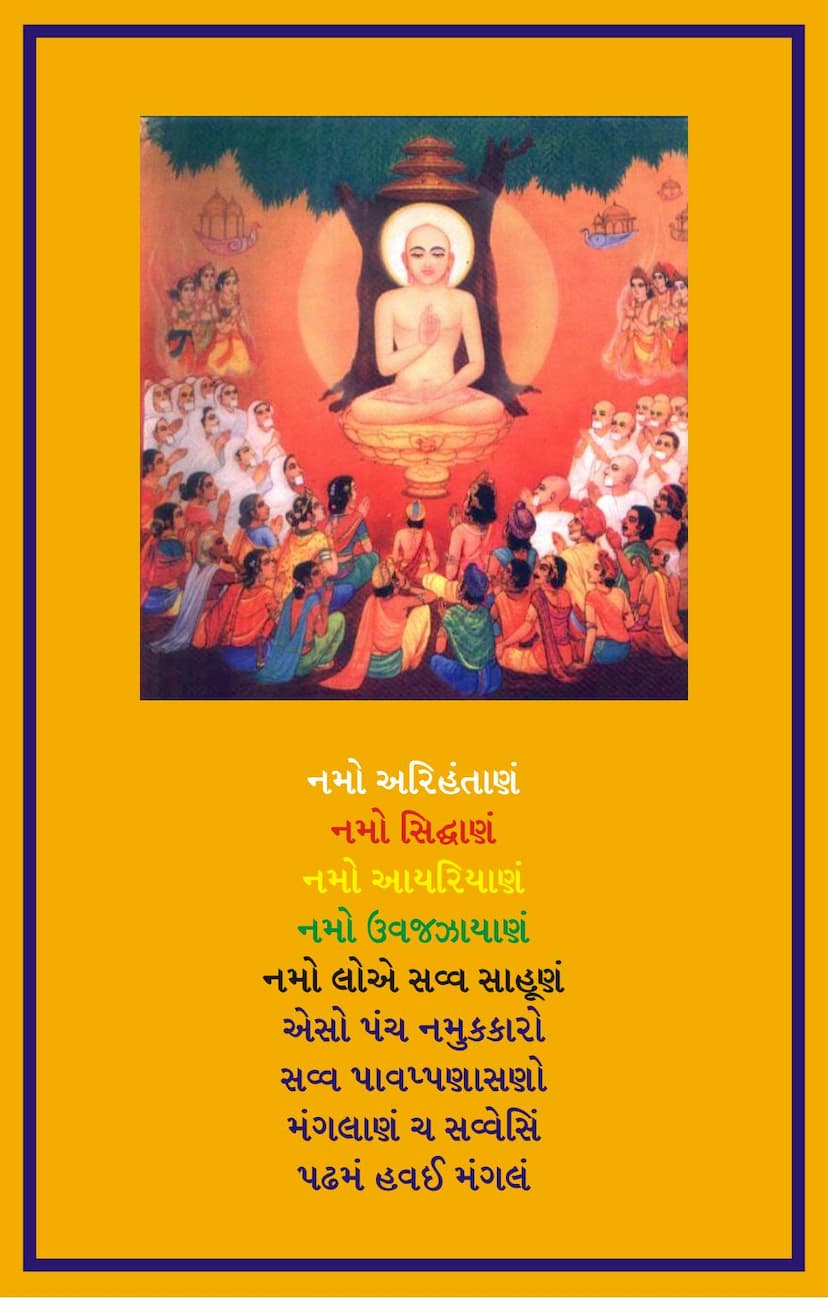Agam 13 Upang 02 Rajprashniya Sutra Part 02 Sthanakvasi
Added to library: September 1, 2025

Summary
Based on the provided text, here's a comprehensive summary of the Rajprashniya Sutra Part 02 (Sthanakvasi), authored by Ghasilal Maharaj:
This text is the second part of the Rajprashniya Sutra, a significant Jain scripture. The provided pages are primarily the beginning and end matter of the book, including the title page, publisher information, introductory prayers (Navkar Mantra), author and publisher details, and extensive "Shuddhi Patra" (errata).
Key Information from the Provided Text:
- Book Title: Agam 13 Upang 02 Rajprashniya Sutra Part 02
- Author(s): Ghasilal Maharaj (with a commentary called "Subodhini")
- Publisher: A B Shwetambar Sthanakvasi Jain Shastroddhar Samiti
- Catalog Link: https://jainqq.org/explore/006342/1
- Publication Details: First edition, 1200 copies printed. Published in Veer Samvat 2492, Vikram Samvat 2022, and AD 1966.
- Language: The text is presented in its original Prakrit form, with Hindi and Gujarati translations and commentaries.
Content Overview (Based on the Shuddhi Patra and a brief glimpse of the main text):
The bulk of the provided pages (Page 6 to Page 41) is dedicated to "Shuddhi Patra" or errata. This indicates a meticulous effort to ensure accuracy in the published text. The errata lists numerous corrections for various Jain scriptures, including:
- Samavayanga Sutra
- Jnātādharmakathāṅga Sūtra (Parts 2 and 3)
- Antakṛddaśāṅga Sūtra
- Ācāraṅga Sūtra
- Daśāśrutaskandha
- Bhagavatī Sūtra (Part 3)
- Uttarādhyayana Sūtra (Parts 3 and 4)
This extensive errata section suggests that the publisher's goal was to provide a definitive and corrected edition of these important Agamic texts.
Main Textual Content (Pages 41 onwards):
The main body of the text, starting from Page 41, appears to be the Rajprashniya Sutra itself, along with the commentary "Subodhini".
- Opening Question: The text begins with Gautam Swami asking Bhagavan Mahavir about Suryabhadeva. The core of the inquiry revolves around how Suryabhadeva attained his divine powers (Devriddhi) and divine radiance (Devadyuti). Gautam Swami also seeks to know about Suryabhadeva's past lives, his name, his lineage (gotra), and the specific city or region where he lived. The question delves into the actions (charitable deeds, austerities, etc.) performed in his past life that led to his current state.
- Ghatnas (Incidents/Narratives): The initial section (Pages 42-54) focuses on the narrative of King Pradeshi. The text describes Pradeshi's unrighteousness, cruelty, and adherence to wicked principles. It also introduces his Queen, Suryakanta, and their son, Suryakanta.
- The Role of Chitra Sarathi: The narrative then introduces Chitra Sarathi, a loyal and wise charioteer who serves King Pradeshi. Chitra's intelligence and political acumen are highlighted. He is entrusted with delivering important messages and offerings to King Jaitashatru of Shravasti.
- The Arrival of Keshikumara Shramana: The text then shifts to the arrival of Keshikumara Shramana in Shravasti. His virtuous qualities and adherence to Jain principles are described.
- The Dialogue between Keshikumara Shramana and Pradeshi Raja: A significant portion of the text comprises the philosophical and ethical discourse between Keshikumara Shramana and King Pradeshi. Keshikumara Shramana uses various analogies and examples to explain Jain teachings.
- Analogy of the Forest: Keshikumara Shramana uses the analogy of a forest that is initially beautiful and full of life but can become desolate and unattractive due to neglect or harsh conditions. This is used to illustrate the potential for spiritual decline if one deviates from righteous conduct.
- The Concept of Soul and Body: A key theme is the distinction between the soul and the body. Keshikumara Shramana employs analogies, like the iron ball heated in fire or the flame within a pot, to explain that the soul is distinct from the physical body. He emphasizes that the soul is eternal and unchanging, while the body is ephemeral.
- The Importance of Righteous Conduct and Renunciation: The text highlights the Jain emphasis on righteous conduct, detachment from worldly possessions and pleasures, and the path of renunciation for spiritual liberation.
- The Nature of Knowledge: The text briefly touches upon the different types of knowledge in Jainism, particularly focusing on the limitations of worldly knowledge (Chaddmastha knowledge) compared to the omniscience of an Arhat (Kevalgnana).
- King Pradeshi's Transformation: The dialogue aims to guide King Pradeshi towards understanding the true nature of reality and the importance of adhering to the path of righteousness.
Overall Purpose:
The Rajprashniya Sutra, as indicated by this part and its commentary, aims to:
- Illustrate Jain Philosophy: Through the dialogue between Keshikumara Shramana and King Pradeshi, it explains fundamental Jain concepts like the nature of the soul, karma, liberation, and the importance of righteous living.
- Provide Ethical Guidance: The text offers ethical lessons by contrasting virtuous and unvirtuous conduct, using King Pradeshi's negative examples and Keshikumara Shramana's teachings as a guide.
- Emphasize Detachment: The narrative underscores the Jain principle of renunciation and detachment from worldly desires and attachments for spiritual progress.
- Promote Spiritual Inquiry: The dialogue encourages introspection and a deeper understanding of the path to spiritual liberation.
The extensive errata section at the beginning highlights the publisher's commitment to providing an accurate and authentic version of these ancient Jain texts for the benefit of the Jain community.